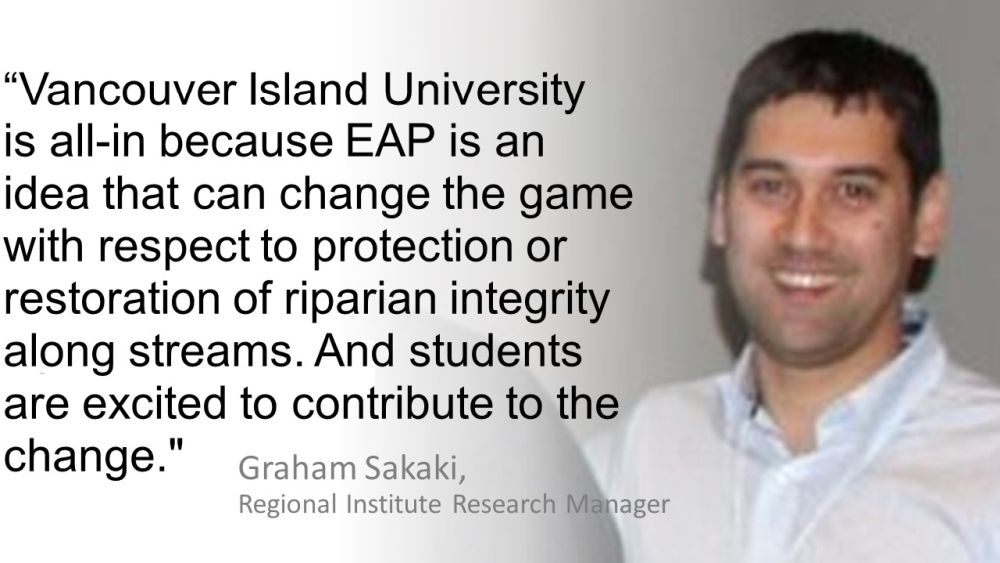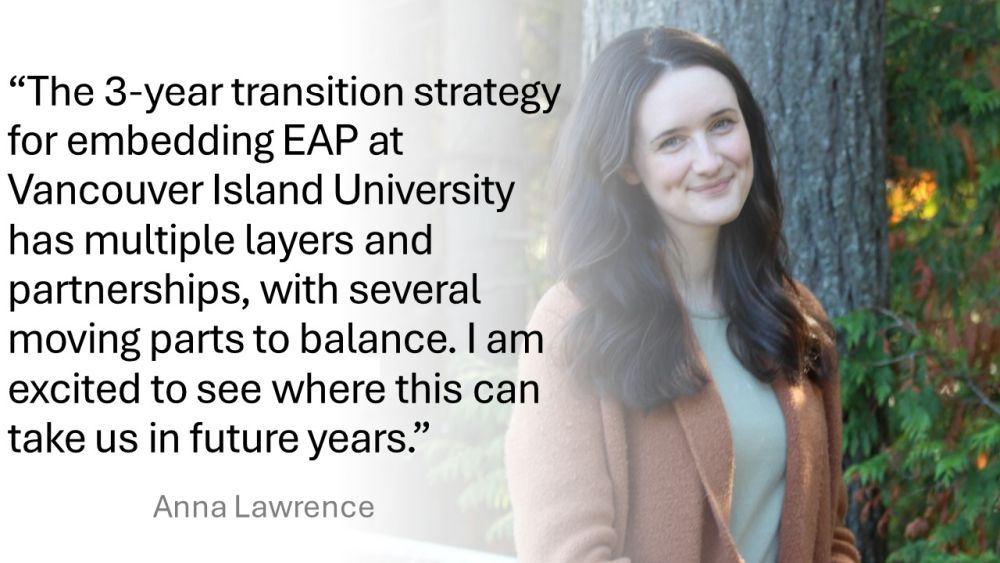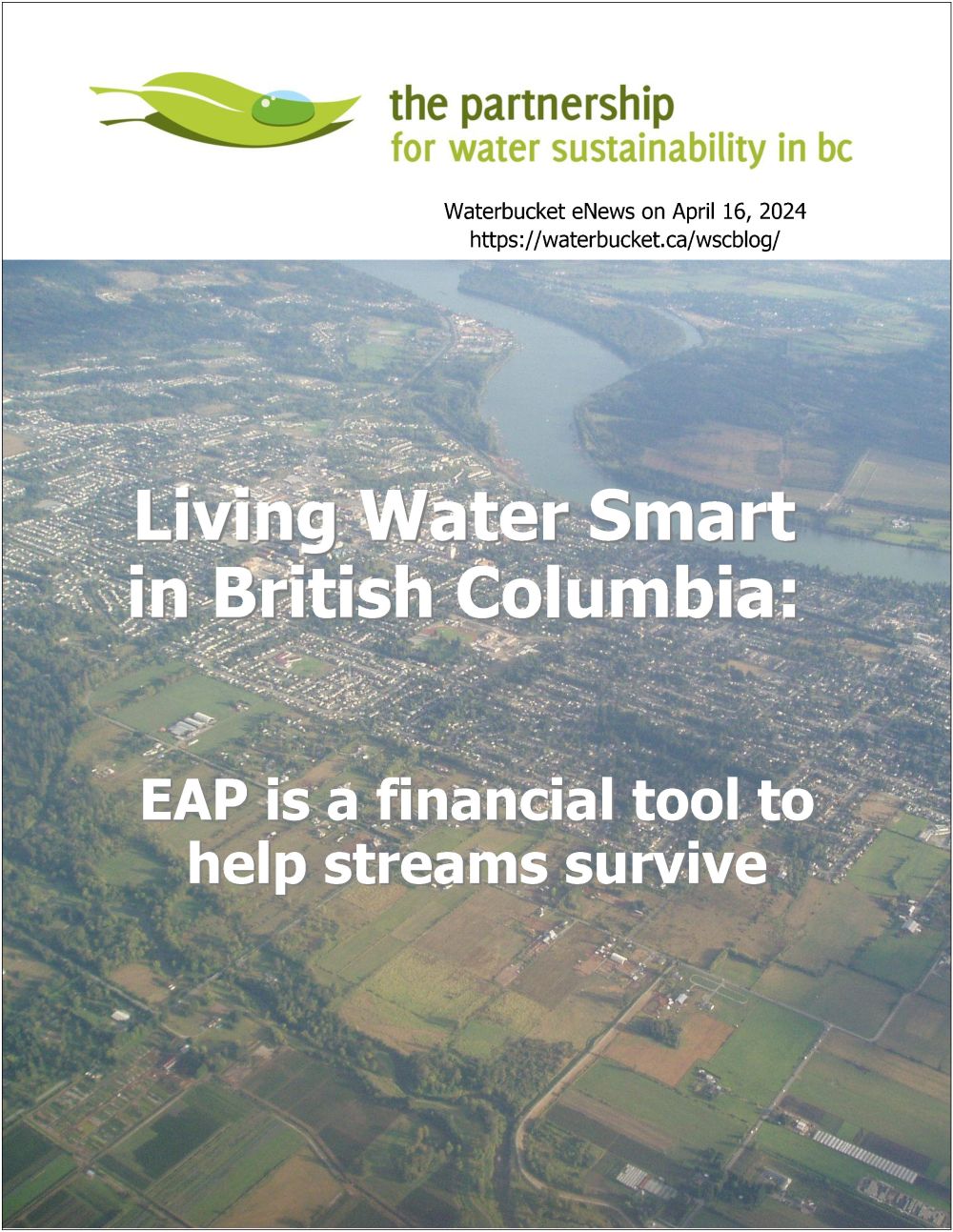GEORGIA BASIN INTER-REGIONAL EDUCATIONAL INITIATIVE: “Vancouver Island University is all-in because EAP, the Ecological Accounting Process, is an idea that can change the game and students are excited to contribute to the change,” stated Graham Sakaki of Vancouver Island University
Note to Reader:
Published by the Partnership for Water Sustainability in British Columbia, Waterbucket eNews celebrates the leadership of individuals and organizations who are guided by the Living Water Smart vision. The edition published on April 16, 2024 features Tim Pringle, Anna Lawrence, and Sam Gerrand who personify the passing of the intergenerational baton.
They tell the story of Year One of the 3-year transition strategy to embed EAP, the Ecological Accounting Process, at Vancouver Island University. EAP is a financial tool that fills a gap. It provides a measure of the Riparian Deficit which is a consequence of urbanization.

EAP is a financial tool to help streams survive
“The story behind the story is about the importance of embedding knowledge of EAP into the youth who are going to be the future of our local governments. The framework that we have set up ensures this will happen,” Graham Sakaki emphasized in a conversation about what being an EAP partner means to him and to Vancouver Island University.
“There are lots of partnerships that exist for selfish reasons. But the EAP Partnership is selfless, and from all angles. It is a leap of faith for member local governments. Partnership for Water Sustainability commitment to passing the baton is unwavering.”

Intergenerational baton strategy
“Led by Tim Pringle, the Partnership for Water Sustainability created the EAP methodology and refined it with 9 demonstration projects. The success is that EAP has been passed on to VIU as part of the intergenerational baton. Now we are in the midst of a 3-year transition strategy to embed it,” stated Anna Lawrence.
“I came into the EAP process with a completely different background because my master’s degree is in Sustainable Leisure Management. So, it was a journey to get my head around the jargon and the different viewpoints and ways of thinking. This applied not only to the development of the EAP methodology but also to the different stakeholders.”

Why we need EAP, the Ecological Accounting Process, to tackle the “Riparian Deficit”
“A measure of the consequence of human settlement is the Riparian Deficit,” explained Tim Pringle, Chair of the Ecological Accounting Process (EAP) initiative.
“The Riparian Deficit applies to the regulated setback which is the interface between land and a stream. It is the natural systems equivalent of the well-known Infrastructure Deficit for engineered systems.”
“EAP is a land use perspective. EAP provides local governments with the real numbers they need to deliver outcomes: What is the number for the line item in a local government annual budget for community investment in maintenance and management, that is M&M, of streams?”
“Streams need a place to be. If we cannot get our heads around that, we are not going to keep our streams. When something does not get measured, it does not get managed,” Tim Pringle stresses.
To Learn More:
To read the complete story, download a copy of Living Water Smart in British Columbia: EAP is a financial tool to help streams survive.
DOWNLOAD A COPY: https://waterbucket.ca/wcp/wp-content/uploads/sites/6/2024/04/PWSBC_Living-Water-Smart_EAP-Partnership-and-intergenerational-baton_2024.pdf


